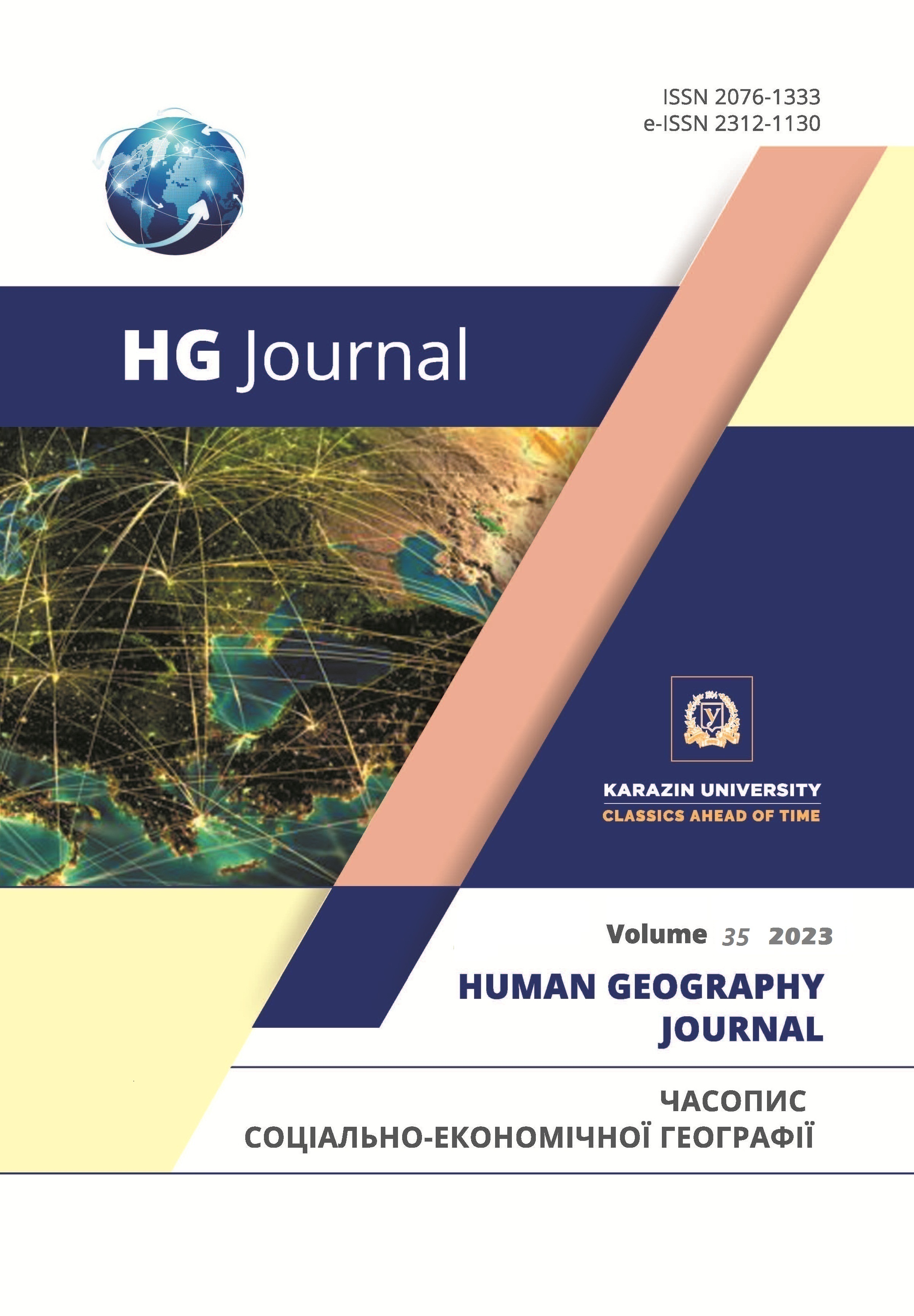Assessing the sustainability of urban spaces based on city strategy analysis
Abstract
The level of urbanization worldwide rises. The increase in urban population stimulates economic growth, improvements in healthcare and education systems, and the creation of new jobs. However, the concentration of urban population leads to air and water pollution, the depletion of arable land, and other challenges. These issues hinder the achievement of sustainable development in countries. To regulate and control this issue, government authorities worldwide are developing and implementing strategies and development plans for cities to steer the urbanization process towards the desired sustainable development indicators. To gauge the success of these strategies, a set of indicators has been developed to show the resilience of urban development. The list of indicators varies significantly in global practices as they are tailored to specific city needs.
This paper presents a list of indicators that are consistently applied across six strategies for the development of Ukrainian cities (Kharkiv, Kyiv, Lviv, Odesa, Dnipro, Vinnytsia). The indicators are grouped into three categories: economic, social, and environmental. For each indicator in these categories, a standardized unit of measurement was established, and additional indicators that may not be directly comparable but are included in international urban sustainability indicator lists were also incorporated. This set of indicators is not comprehensive and can be adjusted – either expanded or reduced – as needed to align with the city's short-term and long-term sustainable development plans. Through comparative analysis, measures are justified regarding the use of indicators to assess the sustainability of city development.
This study demonstrates the necessity of aligning the indicator selection process based on benchmark indicators derived from advanced global experiences, taking into account successful practices. Future research will strive to combine these indicators to establish a universal approach for calculating a city's sustainable development index. Such an index would provide a valuable tool for policymakers, urban planners, and stakeholders to monitor progress, identify areas needing improvement, and implement targeted interventions. By fostering a holistic and integrated approach to urban development, cities can achieve sustainability goals, enhance the quality of life for their residents, and contribute to global efforts in promoting sustainable urbanization.
Downloads
References
Ambiente Italia Research Institute. (2003). European common indicators (ECI):Towards a local sustainability profile. Final Project Report. Luxemburg: Office for Official Publications of the European Communities.
Briassoulis, H. (2001). Sustainable development and its indicators: through a (planner’s)glass darkly. Journal of Environmental Planning and Management, 44(3), 409-427.
Brandon, P.S., & Lombardi, P. (2005). Evaluating sustainable development in the builtenvironment. Oxford: Blackwell
Encalada, J.A. D., & Caceres, A.P. (2009). System dynamics urban sustainability model for Puerto Aura in Puebla, Mexico. Systematic Practice and Action Research, 22, 77-99.
Haase, D., Haase, A., Kabisch, S., et al. (2008). Guidelines for the ‘perfect inner city’. Discussing the appropriateness of monitoring approaches for reurbanization. European Planning Studies, 16(8), 1075-1081.
Kahn, M.E. (2006). Green Cities: Urban growth and the environment. Washington,DC: Brookings Institution Press.
Mega, V., & Pedersen, J. (1998). Urban sustainability indicators. Dublin, Ireland.
Parris, T.M., & Kates, R.W. (2003). Characterizing and measuring sustainabledevelopment. Annual Review Environmental Resources, 28(13), 559-586.
Roy, M. (2009). Planning for sustainable urbanization in fast growing cities: Mitigation and adaptation issues addressed in Dhaka, Bangladesh. Habitat International, 33(3), 276-286.
Shen, L.Y., Jorge Ochoa, J., Shah, M.N., & Zhang, X. (2011). The application of urban sustainability indicators-A comparison between various practice. Habitat International, 35(1), 17-29.
Shen, L., Peng, Y., Zhang, X., & Wu, Y. (2012). An alternative model for evaluating sustainable urbanization. Cities, 29(1), 32-39. https://doi.org/10.1016/j.cities.2011.06.008
United Nations Human Settlement Programme/Department for International Development (UN-Habitat/DFID) (2002). Sustainable urbanisation: Achieving agenda 21. UN-Habitat/DFID, Nairobi.
Venhryn, D.V., & Sehida, K.Y. (2017). Typizatsiya rehionalʹnykh urbanizatsiynykh protsesiv v Ukrayinі [Typification of regional urbanization processes in Ukraine]. Visnyk Kharkivsʹkoho natsionalʹnoho universytetu imeni V.N. Karazina: Heolohiya – Heohrafiya – Ekolohiya [in Ukrainian].
Voychuk, M.V. (2018). Orhanizatsiyno-ekonomichni zasady upravlinnya stalym rozvytkom mista: dysertatsiya [Organizational and economic principles of managing the sustainable development of the city: dissertation]. Lutsk: Skhidnoyevropeysʹkyy natsionalʹnyy universytet imeni Lesi Ukrayinky [in Ukrainian].
Ofitsiynyy sayt misʹkoyi rady Vinnytsi [Official website of Vinnytsia City Council]. Retrieved from https://www.vmr.gov.ua [in Ukrainian].
Ofitsiynyy sayt misʹkoyi rady Dnipro [Official website of Dnipro City Council]. Retrieved from https://dniprorada.gov.ua [in Ukrainian].
Ofitsiynyy sayt misʹkoyi rady Kyiv [Official website of Kyiv City Council]. Retrieved from https://kmr.gov.ua [in Ukrainian].
Ofitsiynyy sayt misʹkoyi rady Lviv [Official website of Lviv City Council]. Retrieved from https://city-adm.lviv.ua [in Ukrainian].
Ofitsiynyy sayt misʹkoyi rady Odesa [Official website of Odesa City Council]. Retrieved from https://omr.gov.ua [in Ukrainian].
Ofitsiynyy sayt misʹkoyi rady Kharkiv [Official website of Kharkiv City Council]. Retrieved from https://www.city.kharkiv.ua [in Ukrainian].
Copyright (c) 2023 Venhryn D.

This work is licensed under a Creative Commons Attribution 4.0 International License.




